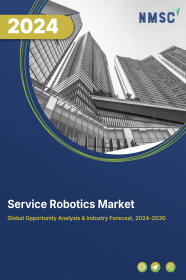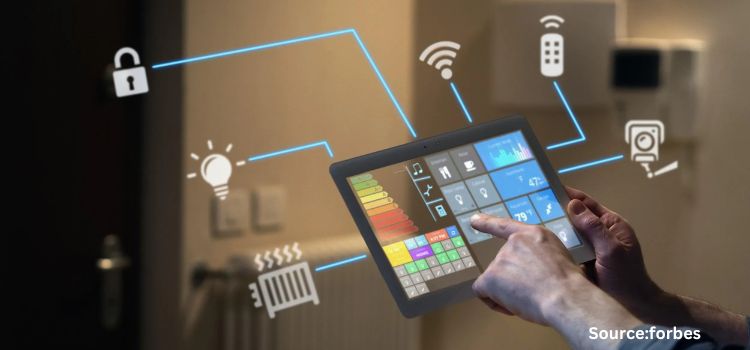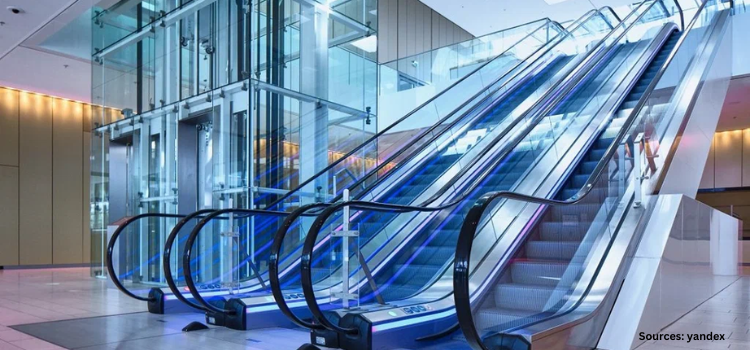
Service Robotics Market by Type (Personal Robots, Professional Robots), Operating Environment (Aerial, Marine, Ground), Components (Control Systems, Actuators, Software, Sensors), Application (Professional, Personal) - Global Opportunity Analysis and Industry Forecast, 2024 – 2030
US Tariff Impact on Service Robotics Market
Trump Tariffs Are Reshaping Global Business
Market Definition
The Service Robotics Market was valued at USD 43.35 billion in 2023 and is predicted to reach USD 173.39 billion by 2030, registering a CAGR of 21.40% from 2024 to 2030.
Service robots streamline and perform a variety of assistive tasks that are menial, time-consuming, distant, dangerous, or repetitive, to assist human beings. These robots are autonomous and operated by a built-in control system with manual override options wherein the control is taken from an automated system and given to the user. Service robots help to manage time and enhance productivity by reducing the workload of the staff and labors across various industries including healthcare, construction, and others. They deliver precise and high-quality services that have improved their usability & dependability. These robots assist humans in various applications such as surgeries, construction, automation, domestic help, and others.
Market Dynamics and Trends
The rising demand for service robotics is attributable to the high adoption of the Internet of Robotic Things (IoRT) to access the robots remotely and optimize maintenance. Likewise, the ever-increasing technological advancements including artificial intelligence, automation, and others are likely to augment the market growth. Also, the scarcity of trained workers has influenced various industries including medical & healthcare and inspection & maintenance among others to adopt service robots. These factors are expected to drive market sales.
Moreover, the incorporation of robots for companionship, handicap help, and aid for the growing geriatric population, including Lovot, Miko, EMO, Misa, and others is further expected to boost the service robotics market growth. The high initial investment required for the integration, procurement, and programming along with the high maintenance cost of service robots are factors expected to restrain the growth of the market during the forecast period.
For instance, in 2021, according to the estimates of the Robotic Industries Association (RIA), the maintenance cost of service robots is approximately 500 million USD per annum. On the contrary, the growing adoption of swarm intelligence technology that enables the robots to perform various complex tasks including explosive disarmament, fire-fighting, minimally invasives surgeries, and drilling in construction sites with ease are expected to create lucrative growth opportunities for the market players in future.
Market Segmentation and Scope of Study
The global service robotics market is segmented based on type, operating environment, component, application, and geography. Based on type, the market is classified into personal robots and professional robots. Based on operating environment, the market is segmented into aerial, marine, and ground. On the basis of component, the market is categorized into hardware and software. Based on application, the market is divided into field, logistics, domestic, defense, healthcare, inspection and maintenance, construction, entertainment, education, and others. Geographical breakdown and analysis of each of the aforesaid classification include regions comprising North America, Europe, Asia-Pacific, and RoW.
Geographical Analysis
Asia-Pacific dominated the global service robotics market in 2021 and is potently expected to remain dominant in the market throughout the forecast period. This is attributed to factors such as the presence of leading manufacturing countries that include Japan, China, and South Korea. For instance, according to the data published by the International Federation of Robotics (IFR), Japan is the world’s largest industrial robot manufacturer delivering 45% of the global supply, as of March 2022. Their export ratio rose to 78% when 136,069 industrial robots were shipped.
Also, the rapid increase in the adoption of service robots in China, Japan, and India in various applications such as healthcare and construction is driving the market in this region. For instance, in March 2020, a Japanese start-up UBTECH Robotics developed medical robots that can be utilized to conduct disinfection in hospitals as well as check people’s temperature at a Chinese hospital in Shenzhen. These robots replaced workers and have evolved to be even smarter with the help of artificial intelligence.
North America is projected to exhibit substantial growth in the global service robotics market during the forecast period, due to the growing adoption of contactless deliveries in the U.S. as well as a suitable investment scenario for the research on assistive technologies. For instance, in March 2020, a U.S. start-up Starship Technologies developed service robots that have been initially used for delivering pizzas and later to deliver stocks from food stores in the neighborhood.
Also, factors such as the accessibility of scientifically advanced service robots in the healthcare sector, especially to assist in operations and monitoring patients are expected to boost the market. For instance, in June 2020, Intuitive announced the FDA clearance of a mobile cone-beam CT (CBCT) imaging technology integration and the Ion Endoluminal System used for robotic-assisted bronchoscopy.
Competitive Landscape
The service robotics market includes several market players, such as iRobot Corporation, Intuitive Surgical, Inc., SoftBank Robotics Group., DeLaval, DJI, ABB Ltd., Northrop Grumman, Samsung, Daifuku Co., Ltd., and AB Electrolux among others. These market players are adopting various joint venture strategies across various regions to maintain their dominance in the global service robotics market.
For Instance, in September 2020, SoftBank Robotics Group announced its strategic collaboration with Bear Robotics to introduce Servi, a robot to serve the food service and hospitality market. The robot is programmed to pick up and deliver dishes by entering the table number and pressing the “go” button on the computer. Moreover, in March 2020, ABB Ltd announced its partnership with Covariant to bring AI-enabled robotics solutions to market. This partnership was aimed at allowing intelligent robots to work alongside humans in dynamic environments, learning and improving together with every task completed.
Key Segments Markets
By Type
-
Articulated Robots
-
SCARA Robots
-
Cylindrical Robots
-
Cartesian/Linear Robots
-
Parallel Robots
-
Collaborative Robots
-
Autonomous Mobile Robots (AMRs)
-
Automated Guided Vehicles (AGVs)
-
Other Robots
BY OFFERING
-
Hardware
-
Software
-
Robot Control Software
-
Vision & Perception Software
-
Other Software
-
BY PAYLOAD CAPACITY
-
≤ 100 KG
-
101-200 KG
-
201-500 KG
-
501-1000 KG
-
1001-2000 KG
-
2001-5000KG
-
More than 5000 KG
BY MOBILITY
-
Stationary Robots
-
Mobile Robots
BY MOUNTING TYPE
-
Floor mounted
-
Wall-mounted
-
Ceiling mounted
-
Rail mounted
BY APPLICATION
-
Material Handling
-
Assembling & Disassembling
-
Processing
-
Cleanroom
-
Dispensing
-
Welding and Soldering
-
Pick and Place
-
Others
BY INDUSTRY
-
Automotive
-
Semiconductor & Electronics
-
Plastic and Chemical Products
-
Metal and Machinery
-
Logistics
-
Food & Beverages
-
Healthcare & Pharmaceutical
-
Others
By Geography
-
North America
-
U.S.
-
Canada
-
Mexico
-
-
Europe
-
UK
-
Germany
-
France
-
Italy
-
Spain
-
Rest of Europe
-
-
Asia-Pacific
-
China
-
India
-
Japan
-
South Korea
-
Australia
-
Rest of Asia-Pacific
-
-
RoW
-
UAE
-
Saudi Arabia
-
South Africa
-
Brazil
-
Remaining countries
-
Key Players
-
Intuitive Surgical Operations, Inc.
-
SZ DJI Technology Co., Ltd.
-
Daifuku Co., Ltd.
-
JD.com, Inc.
-
iRobot Corporation
-
Samsung Electronics
-
Kongsberg Maritime
-
Northrop Grumman
-
SoftBank Robotics Group
-
DeLaval
-
KUKA AG
-
Stryker Inc.
-
Neato Robotics
-
General Electric
-
Harvest CROO Robotics LLC

















 Speak to Our Analyst
Speak to Our Analyst





















